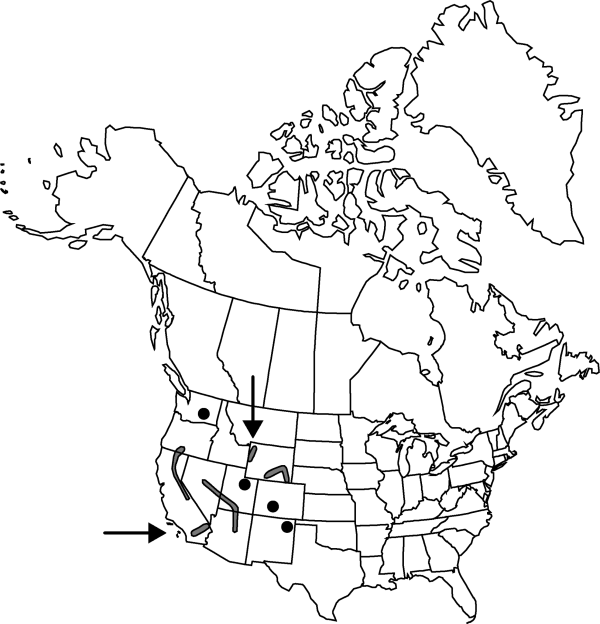Difference between revisions of "Chenopodium hians"
in N. L. Britton et al., N. Amer. Fl. 21: 16. 1916.
FNA>Volume Importer |
imported>Volume Importer |
||
| (One intermediate revision by the same user not shown) | |||
| Line 1: | Line 1: | ||
{{Treatment/ID | {{Treatment/ID | ||
|accepted_name=Chenopodium hians | |accepted_name=Chenopodium hians | ||
| − | |accepted_authority=Standley | + | |accepted_authority=Standley |
|publications={{Treatment/Publication | |publications={{Treatment/Publication | ||
|title=in N. L. Britton et al., N. Amer. Fl. | |title=in N. L. Britton et al., N. Amer. Fl. | ||
|place=21: 16. 1916 | |place=21: 16. 1916 | ||
|year=1916 | |year=1916 | ||
| + | }} | ||
| + | |special_status={{Treatment/ID/Special_status | ||
| + | |code=E | ||
| + | |label=Endemic | ||
}} | }} | ||
|basionyms= | |basionyms= | ||
| Line 35: | Line 39: | ||
-->{{#Taxon: | -->{{#Taxon: | ||
name=Chenopodium hians | name=Chenopodium hians | ||
| − | |authority=Standley | + | |authority=Standley |
|rank=species | |rank=species | ||
|parent rank=subsection | |parent rank=subsection | ||
| Line 48: | Line 52: | ||
|publication title=in N. L. Britton et al., N. Amer. Fl. | |publication title=in N. L. Britton et al., N. Amer. Fl. | ||
|publication year=1916 | |publication year=1916 | ||
| − | |special status= | + | |special status=Endemic |
| − | |source xml=https:// | + | |source xml=https://bitbucket.org/aafc-mbb/fna-data-curation/src/2e0870ddd59836b60bcf96646a41e87ea5a5943a/coarse_grained_fna_xml/V4/V4_542.xml |
|genus=Chenopodium | |genus=Chenopodium | ||
|subgenus=Chenopodium subg. Chenopodium | |subgenus=Chenopodium subg. Chenopodium | ||
Latest revision as of 21:59, 5 November 2020
Stems erect, branched, 1–4.5(–8) dm, farinose; basal branches erect, often weak; distal branches erect or nearly so, sparse. Leaves nonaromatic; petiole 0.2–0.7 cm; blade elliptic-oblong or narrowly lanceolate, 3-veined, 1–2.5(–3) × 0.3–0.6(–0.8) cm, base cuneate, margins entire, apex acute to rounded, densely farinose abaxially. Inflorescences glomerules in lateral spikes or panicles, 5–7 cm; glomerules densely spaced, maturing irregularly; bracts leaflike. Flowers: perianth segments 5, distinct nearly to base; lobes elliptic, oblong, or narrowly ovate, 0.8–1 × 0.6–0.8 mm, apex rounded, slightly keeled, densely farinose, erect and exposing fruit at maturity; stamens 5; stigmas 2, 0.2 mm. Achenes ovoid; pericarp adherent, minutely tuberculate. Seeds round, 1–1.4 mm diam., margins rounded; seed coat black, rugulate. 2n = 18.
Phenology: Fruiting late summer–early fall.
Habitat: Open, dry or moist areas including prairies, pastures, sand hills, roadsides, lakeshores
Elevation: 500-3000 m
Distribution

Alta., B.C., Sask., Ariz., Calif., Colo., Nev., N.Mex., Oreg., Tex., Utah, Wash., Wyo.
Discussion
Selected References
None.